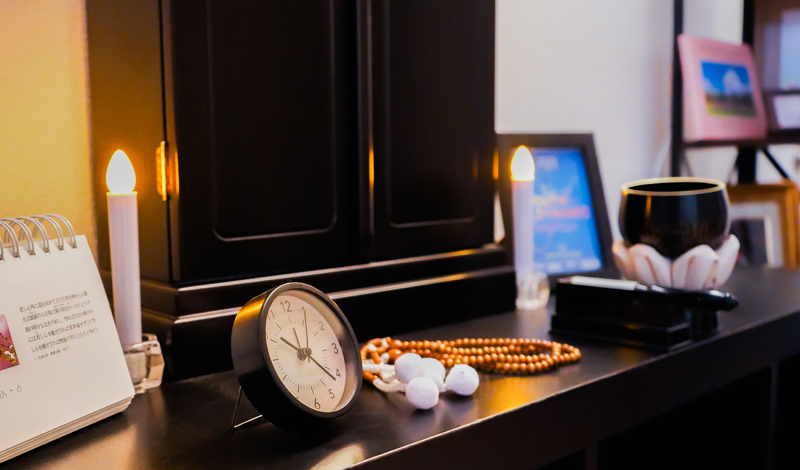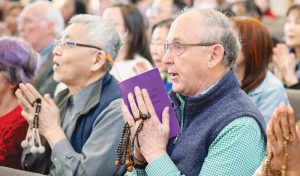Soka Gakkai Nichiren Buddhism places primary importance on “the heart” based on Nichiren Daishonin’s teaching that “it is the heart that is important” (“The Strategy of the Lotus Sutra,” The Writings of Nichiren Daishonin, vol. 1, p. 1000), while some other forms of Buddhism place primary importance on rules regarding ceremonies and formalities. With respect to enshrining the Gohonzon in the home, most important is our sincere spirit to treasure the Gohonzon.
At the same time, in the SGI, we do observe some basic guidelines for the purpose of expressing our heartfelt respect for the Gohonzon as the embodiment of the Mystic Law and the most noble and respectworthy nature of life itself.
With that in mind, here are some brief answers to common questions regarding the enshrinement and care of the Gohonzon.
Q: What should I keep in mind when finding the best place to set up my Buddhist altar?
Safe and secure
The altar should be placed in a location where it will be secure and stable, with minimal risk of the Gohonzon being knocked over or damaged in any way. If possible, it is best to avoid placing the altar too close to doors, open windows, fireplaces or busy passageways.
Minimal distractions
Try to find a place with minimal distractions, for example, a location that is not too close to a television or in areas that may often be used by other members of the household.
Ample light
The location should have ample light so the Gohonzon can easily be seen when the altar is open.
Q: What are some basic points to keep in mind when enshrining the Gohonzon?
The enshrinement of the Gohonzon is a significant and joyful event that takes place with the support of your local SGI leaders and members. Whenever possible, please feel free to invite your family and friends.
Respectful attitude
The Gohonzon is the object of devotion representing one’s enlightened life. Therefore, it should be handled with utmost respect during the enshrinement.
Careful handling
As much as possible, to prevent stains or soiling, avoid directly touching the Gohonzon (which consists of calligraphy on white paper) or the cloth backing.
Level position
When the enshrinement is complete, the Gohonzon should be hanging so that it is level horizontally. Make adjustments by gently touching the dowel at the top, as you would a framed picture on a wall.
Proper height
The Gohonzon should be enshrined at such a height that one is neither looking down on it nor straining one’s neck to look up at it when chanting.
Q: What are some basic points to keep in mind related to the care of the altar?
Cleanliness
Keep the altar area clean and dust-free at all times.
Offerings
While chanting and reciting the sutra are fundamental, placing offerings such as candles, greens, fruit and incense fall into the category of formalities, which are not a required part of Buddhist practice. SGI members, however, often choose to make such offerings as an expression of sincerity, respect and praise for the Gohonzon. The offerings therefore serve to beautify and dignify the altar.
Traditionally, greens, incense, candles and fresh water are offered. Some choose to use electric candles or forgo incense for fire safety or due to allergies. Again, these offerings are meant to dignify the altar area as an expression of our sincerity, so their exact form and presentation is a matter of personal choice.
Most important is our sincere spirit to treasure and protect the Gohonzon.
You are reading {{ meterCount }} of {{ meterMax }} free premium articles





